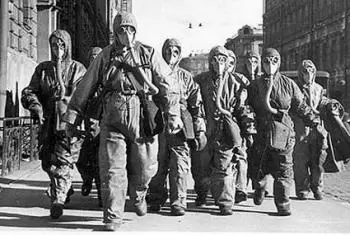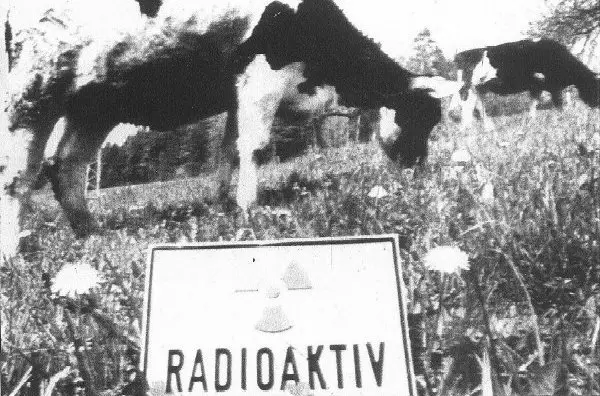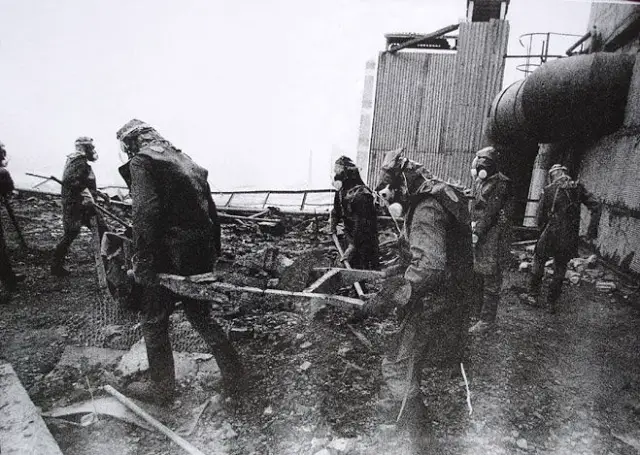
The Chernobyl nuclear power plant suffered the worst nuclear accident in history after reactor number four exploded on April 26, 1986. An enormous amount of rapidly spreading radioactive products were released as a result of the accident.
The Chernobyl accident gave rise to a subsequent fire that increased the dispersal effects of radioactive products. In addition, the high temperatures at which the graphite was found aggravated the fire and contributed to atmospheric dispersion.
Of the radioactive materials released, iodine-131 and cesium-137 were especially dangerous, with a half-life of 8 days and 30 years each. It is estimated that about half of the amount contained by the reactor was released to the outside.
The heaviest were found within a radius of 110 km, and the most volatile reached great distances. Thus, in addition to the immediate impact in the Ukraine and Belarus, the radioactive contamination reached areas of the European part of the former Soviet Union, and the United States and Japan.
It is estimated that more than five million people still live in the most polluted areas.
In this section we analyze the health and environmental effects along with the technical and political repercussions of this nuclear disaster.
Health effects
The effects of the Chernobyl accident are difficult to determine exactly for technical but also political reasons. Different official and independent associations have published data in this regard with significant differences in the figures. However, in this article we present the conclusions of the WHO (World Health Organization):
The WHO developed the IPHECA (International Program on the Health Effects of the Chernobyl Accident) . The objective was to be able to investigate the possible consequences of Chernobyl in the health field. In 2006, 20 years after the accident, the WHO conducted a second study.
According to the WHO, the immediate effects of Chernobyl on health are the following:

-
237 people showed symptoms of Acute Irradiation Syndrome (SIA), confirming the diagnosis in 134 cases due to the high doses of radiation received.
-
31 people died during the accident, of which 28 (firefighters and operators) were victims of the high dose of radioactivity, and 3 from other causes.
-
14 more people have died in the ten years since the accident.
-
Between 600,000 and 800,000 people in charge of control and cleanup tasks (liquidators) died in different periods from the effects of radiation.
-
16,000 inhabitants of the area were evacuated several days after the accident. An exclusion zone was established in the most contaminated territories, in a radius of 30 km around the facility, affecting some 5,200 square kilometers .
-
 565 cases of thyroid cancer in children between 0 and 14 years old and in some adults, who lived in the most polluted areas. At least 10 of these cases were fatal.
565 cases of thyroid cancer in children between 0 and 14 years old and in some adults, who lived in the most polluted areas. At least 10 of these cases were fatal. -
Other types of cancer, particularly leukemia, have not registered significant deviations from the expected incidence under normal conditions.
-
Psychosocial effects produced by other causes. For example, the lack of information, the evacuation of those affected and the fear of the biological effects of radiation in the long term.
Impact on the environment
At the time of the accident, the reactor had about 190 tons of nuclear fuel. Estimates on the amount of material emitted into the atmosphere are not at all certain, since these range between 5% and 97%.
The released radioactive particles move with the air masses, and above all linked to the small solid particles (aerosols) of these air masses. These can be stopped by certain obstacles (trees, mountains, etc). However, the heat of the fire caused the radioactive nuclides to rise to a high altitude, making it easier for opposition to travel thousands of kilometers.
Technical impact of the new reactors
The study of the causes of the accident made the new designs of reactors and nuclear power plants around the world different. The following studies took other possible malfunctions into account and added active (to avoid accidents) and passive (to minimize the effects in the event of an accident) safety measures.
Existing nuclear power plants that did not meet these new criteria were shut down or retrofitted. In January 1993, the IAEA reviewed the analysis of the causes of the accident, attributing an error in the design of the atomic reactor.
Throughout Europe, a network of devices for the detection and control of atmospheric radioactivity was created throughout its territory. This network made it possible to observe and take the necessary measures in cases of accidents, leaks or any type of nuclear event.
Political effects
The Chernobyl accident was decisive for the beginning of the opening process of the Soviet Union in Western Europe, for the end of the cold war and perestroika.
In Italy, for example, the Chernobyl accident led to the proposal of a referendum in 1987 asking whether or not to have nuclear energy. The “no” vote was imposed by 80% and the three operating plants in Italy were closed.